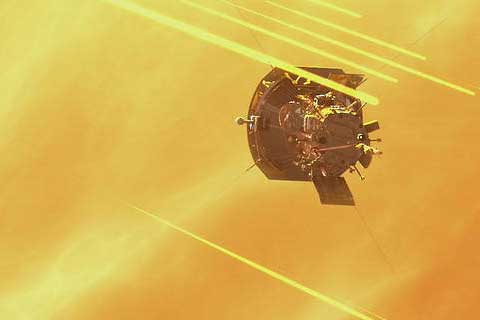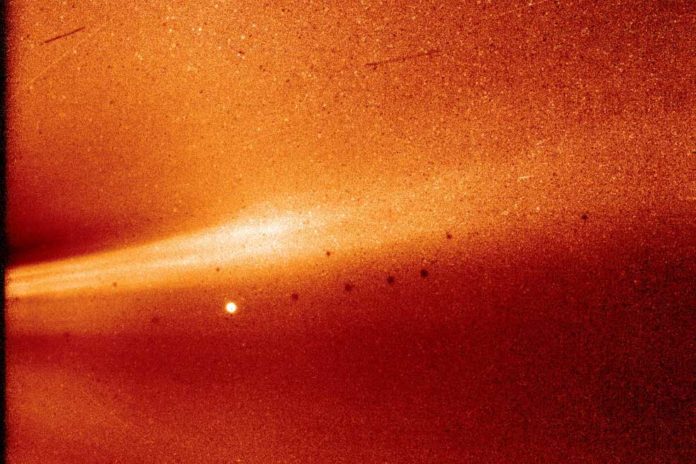NASA’s Parker Solar Probe is on the mission to enlight the physics of our star, the Sun.
From Oct. 31 to Nov. 11, 2018, Parker Solar Probe completed its first solar encounter phase, speeding through the Sun’s outer atmosphere — the corona — and collecting unprecedented data with four suites of cutting-edge instruments.
This is practically the first image from inside the sun. The image captured by Parker’s WISPR when the proof was a mere 16.9 million miles from the sun inside its corona. It obviously indicates two distinct jets of solar material, known as coronal streamers, emanating from the left of the picture. That bright spot out yonder is gas giant Jupiter, while the black spot is artifacts of background correction.

The image was released in conjunction with a press conference held at the fall meeting of the American Geophysical Union, where NASA scientists discussed what they hoped to learn from the probe as the first data begin filtering back to Earth.
Parker Solar Probe is designed to address three major questions about the physics of the Sun. First: How is the Sun’s outer atmosphere, the corona, heated to temperatures about 300 times higher than the visible surface below? Second — how is the solar wind accelerated so quickly to the high speeds we observe? And finally, how do some of the Sun’s most energetic particles rocket away from the Sun at more than half the speed of light?
Nour Raouafi, Parker Solar Probe project scientist at the Johns Hopkins University said, “Parker Solar Probe is providing us with the measurements essential to understanding solar phenomena that have been puzzling us for decades. To close the link, a local sampling of the solar corona and the young solar wind is needed and Parker Solar Probe is doing just that.”
Though the probe indicates that good science data was collected during the first solar encounter, and the data itself began downlinking to Earth on Dec. 7. But because of relative positions of Parker Solar Probe, the Sun and Earth and their effects on radio transmission, some of the science data from this encounter will not downlink until after the mission’s second solar encounter in April 2019.
Terry Kucera, a solar physicist at NASA’s Goddard Space Flight Center in Greenbelt, Maryland said, “Parker Solar Probe is going to a region we’ve never visited before. Meanwhile, from a distance, we can observe the Sun’s corona, which is driving the complex environment around Parker Solar Probe.”
